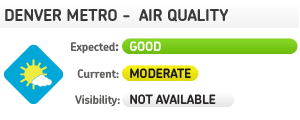Tools for Local Governments
to reduce passenger and commercial vehicle idling
Idling Ordinances
Adopting ordinances to prohibit idling is a common tactic of municipal and county governments to discourage idling behaviors. Oftentimes, however, idling ordinances remain unenforced. Regardless, the adoption of idling ordinances provides a public education opportunity for residents, it strengthens community anti-idling campaigns at schools or in neighborhoods, and if there is a significant penalty, anti-idling ordinances can deter first time or subsequent idling infractions. We highly recommend the adoption of our model anti-idling ordinance:
Drive-thru Idling
With approximately 200,000 drive-thru restaurants in the U.S., it’s no surprise that the emissions from idling vehicles waiting to order has attracted attention. In fact, the air quality impact of drive-thrus has caused many cities across the country to outright ban drive-thrus, or to limit new construction, including New York City, Minneapolis and many others.
In addition to facilitating vehicle idling, drive-thrus cause congestion (especially when additional lanes are added) and are associated with higher incidents of collisions with other cars, bicyclists and pedestrians. Drive-thrus are also antithetical to community-oriented, walkable cities. For all of these reasons, consider updating zoning codes to prohibit the construction of new drive-thrus.
School Idling Programs
Children are more susceptible to developing asthma and other respiratory illnesses from air pollution exposure. Unfortunately, many caregivers idle their vehicles while they wait to pick up and drop off their kids at school – exposing children to harmful tailpipe emissions.
There are various programs schools and school districts can adopt to educate caregivers and school communities about the negative impacts of idling, including the RAQC’s Engines Off at Schools, which uses EPA recommendations. Encourage school districts to adopt the free RAQC education and outreach program – our program coordinators can help get them running.
Additionally, the Colorado Department of Public Health and the Environment recently put together a three-week curriculum about air quality, this curriculum can complement anti-idling education programs at schools.
School bus idling around schools has long been identified as a serious source of air pollution, especially because diesel engines release toxics like benzene. School districts should be encourage to adopt anti-idling policies for their school bus fleets, such as the sample policy below.
Idling at Event Venues
Venues, such as sports complexes, theaters, performing arts centers, convention centers, hotels, and other event locations, have traffic from a variety of drivers: semi-trucks, local delivery vehicles, charter buses, public transit buses, school buses, taxis, limos, utility trucks, and guests’ personal vehicles.
Carefully planning or revising the traffic patterns around venues can greatly reduce the number of idling vehicles. However, there is a unique challenge to creating such policies because the responsible party is often an event planner who has rented that site for a single event, not the local, onsite venue staff. Therefore, it is important for venue staff to provide suggestions and reminders to clients on how to reduce each event’s environmental impact.
In 2008, the Colorado Convention Center partnered with the City and County of Denver’s Department of Environmental Health to reduce onsite commercial vehicle idling through a social marketing pilot program. They were successful in reducing both the percent and duration of idling vehicles. Read the Idling Reduction Social Marketing Pilot Program Results and Summary Implications here.

